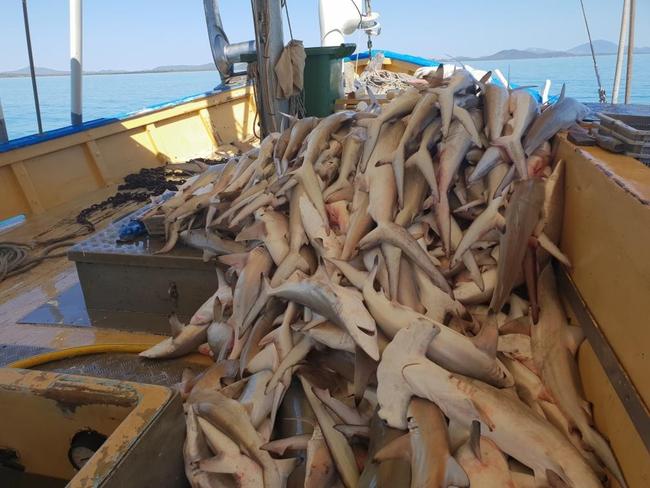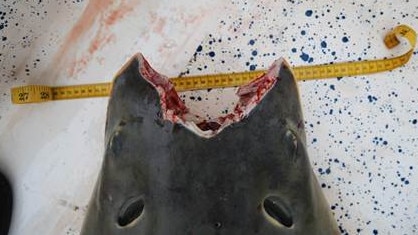Sharks dying en masse in commercial gill nets, say WWF
Nearly 20,000 hammerhead sharks and 3,000 endangered sawfish are entangled in commercial gill nets in Queensland every year, according to new figures from WWF-Australia.
QLD News
Don't miss out on the headlines from QLD News. Followed categories will be added to My News.
NEARLY 20,000 hammerhead sharks and 3,000 endangered sawfish are entangled in commercial gill netsin Queensland every year, according to new figures from WWF-Australia.
The environmentalists have released graphic photos of a sawfish that had its rostrum cut off and then was thrown back in the water to die last year near the mouth of the Wenlock River on Cape York.
There is no direct evidence the fish had been trapped in a gill net before it’s rostrum was cut off.
Rogue fishers blasted for illegal death trap nets near Bundaberg
WWF-Australia has been ramping up a campaign to create a gill net free zone in north Queensland.

But fishermen have hit back, saying they avoid fishing in areas known for sawfish areas as removing them from nets can be dangerous.
They argue Queenslanders would have to eat imported flake at their fish and chips shops if the industry was shut down.
WWF-Australia head of oceans Richard Leck said images taken last year of a saw fish with its nose cut off were “barbaric”.
He said the person who took the photograph had to kill the fish to end its suffering and believed a gill net had been operating in the area.
“Instead of spending time to free this vulnerable species from a net, someone hacked the rostrum off a live fish in an horrific act of cruelty,” he said.
He said the photo re-enforced WWF’s push for a Net Free North.
WWF also released new estimates based on observations that 19,500 hammerhead sharks, 2984 sawfish, 1684 turtles, 48 dolphins, and 48 dugongs were entangled in commercial gill nets on Queensland’s east coast each year.

“It’s time to remove this deadly and outdated fishing practice from areas that are important habitat for endangered species,” he said.
But Mark Savin, who holds one of two commercial shark and mackerel fishing licenses in north Queensland defended the industry, saying fishermen had to handle any sawfish caught in their net quickly for their own safety.
He said flake had to processed quickly to ensure it remained top quality so it complied with Queensland food laws and remained fit for human consumption.
“Generally, ... there is plenty of time to release healthy saw sharks back into the water,” he said.


“Experienced shark fishers won’t net in the areas renowned for saw sharks.”
“They are a safety hazard and we are usually a long way from medical help if needed.”
He said if the environmentalists wanted to end the shark fishing industry they should “put their money where their mouth is and fairly buy out the last two commercial shark boats in the Queensland Fishery”.
“The flake is truly a suitable product being healthy and natural to eat, regenerates fast, has absolutely no chance of becoming extinct and ploughs dollars into our economy,” he said.
According to Fisheries Queensland data, 125,000 sharks were caught in nets in 2018 with 41,000 discarded and 84,000 processed.
Smaller sharks are prized for their fillets which are sold as “flake” in fish and chips shops.



